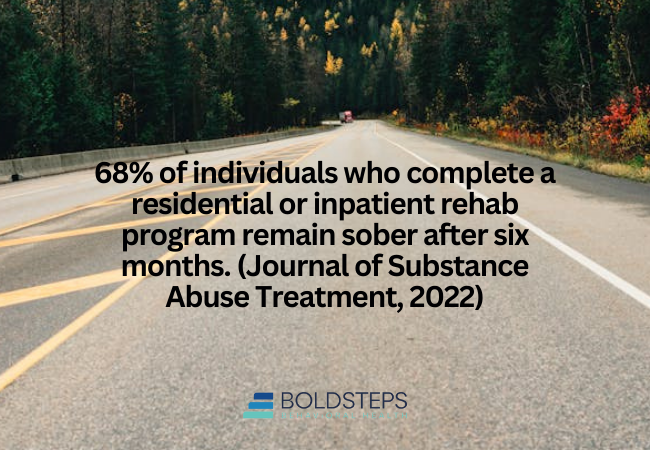Deciding to seek treatment for addiction is a courageous and life-changing decision. If you or a loved one is preparing for inpatient rehab, knowing what to expect and taking the right steps beforehand can make the transition smoother and more successful. Proper preparation helps individuals enter treatment with a clear mindset, reduces stress, and improves overall treatment outcomes.
At Bold Steps Behavioral Health in New Hampshire, we offer a comprehensive range of treatment options, including inpatient rehab, Partial Hospitalization Programs (PHP), Intensive Outpatient Programs (IOP), Outpatient Treatment Programs, and Virtual Treatment Programs. Whether you are preparing for inpatient treatment or looking for continued care after rehab, we are here to guide you every step of the way.
This guide will walk you through seven essential steps to prepare for inpatient rehab and provide insights into what to expect during your stay.
What Is Inpatient Rehab?
Inpatient rehab, also known as residential treatment, is a structured program where individuals live at a treatment facility while receiving intensive addiction therapy. It provides a safe, supportive, and substance-free environment where individuals can fully focus on recovery.
Key Features of Inpatient Rehab:
- 24/7 medical and emotional support from trained professionals.
- Comprehensive therapy sessions, including individual, group, and family therapy.
- Dual Diagnosis Treatment for individuals with co-occurring mental health disorders.
- A structured daily schedule focused on therapy, skill-building, and wellness activities.
- Transition planning for continued care through outpatient treatment programs.
Inpatient rehab is ideal for individuals with severe addiction, dual diagnosis conditions, or those at high risk for relapse.
7 Steps to Prepare for Inpatient Rehab
Step 1: Commit to the Decision and Stay Motivated
Making the decision to enter inpatient rehab is the first and most important step. Recognizing the need for help and staying committed to treatment will set a strong foundation for your recovery journey.
How to Stay Motivated:
- Reflect on why you are seeking treatment and set clear goals.
- Remind yourself that recovery is a process, not a single event.
- Talk to trusted loved ones or a therapist for encouragement and support.
Step 2: Make Necessary Work and Family Arrangements
Since inpatient rehab requires staying at a facility for several weeks or months, it’s essential to make arrangements for your job, children, pets, and household responsibilities.
Work Arrangements:
- Check if your employer offers FMLA (Family and Medical Leave Act) benefits, which provide job-protected leave for medical treatment.
- Speak with HR about temporary leave or accommodations.
- If comfortable, inform your employer about your decision to seek treatment.
Family and Personal Responsibilities:
- Arrange for a trusted family member or friend to help care for children or pets.
- Handle financial obligations, such as paying bills in advance or setting up auto-pay.
- Inform close family members about your treatment timeline and how they can support you.
Step 3: Organize Your Finances and Insurance
Understanding the financial aspects of treatment can ease stress and allow you to focus on recovery.
Key Financial Considerations:
- Contact your insurance provider to determine coverage for inpatient rehab.
- Ask the treatment facility about payment plans or financial assistance options.
- Set up automatic bill payments or designate someone to handle financial matters while in rehab.
At Bold Steps Behavioral Health, we work with most major insurance providers and can assist in verifying your coverage.
Step 4: Pack the Essentials
Each rehab facility has specific guidelines on what you can and cannot bring. Packing wisely ensures you have everything you need for a comfortable stay.
Essential Items to Bring:
- Comfortable clothing for daily activities and exercise.
- Personal hygiene products (must be alcohol-free).
- Important documents, such as ID, insurance information, and a list of medications.
- A journal or notebook for self-reflection and therapy exercises.
- Family photos or motivational items for encouragement.
What NOT to Bring:
- Drugs, alcohol, or paraphernalia.
- Electronics that connect to the internet (some facilities allow phones with restrictions).
- Aerosol products, perfumes with alcohol, or items that may trigger substance use.
Always check with your treatment center for a complete packing list.
Step 5: Prepare Yourself Mentally and Emotionally
Entering inpatient rehab can be an emotional experience, but having the right mindset will help you fully engage in treatment.
Ways to Mentally Prepare:
- Accept that rehab is a safe space for healing and growth.
- Let go of self-doubt and negative self-talk.
- Talk with a therapist or addiction specialist about any concerns.
- Write down your hopes and expectations for recovery.
Understanding that inpatient rehab is a life-changing opportunity can help shift your mindset to one of growth and healing.
Step 6: Communicate with Loved Ones and Build a Support System
Recovery is most successful when you have a strong support system. Before entering rehab, talk to close family members and friends about your decision and how they can support you.
How to Build a Support System:
- Identify positive influences who encourage sobriety.
- Establish healthy boundaries with those who may enable substance use.
- Discuss family therapy options available at the rehab facility.
- Plan for post-rehab support, such as Outpatient Treatment Programs or Virtual Treatment Programs.
Support from loved ones can make a significant difference in motivation and long-term success.
Step 7: Know What to Expect During Treatment
Understanding the structure of inpatient rehab can ease anxiety and help individuals transition smoothly into treatment.
Typical Daily Schedule in Inpatient Rehab:
- Mornings: Group therapy, meditation, and wellness activities.
- Afternoons: Individual therapy, behavioral therapy, and addiction education.
- Evenings: Support groups, recreational therapy, and personal reflection.
Treatment Components:
- Medical Detox Program (if needed) for safe withdrawal from substances.
- Dual Diagnosis Treatment Program for those with mental health concerns.
- Behavioral therapy, including CBT and DBT, to build coping skills.
- Relapse prevention training to prepare for life after rehab.
At Bold Steps Behavioral Health, we provide a structured and compassionate environment where individuals can focus on long-term sobriety.
What Happens After Inpatient Rehab?
Recovery doesn’t end after leaving inpatient rehab—continuing care is essential for maintaining sobriety.
Aftercare Options Include:
- Partial Hospitalization Programs (PHP) – A structured program offering full-day therapy without residential stay.
- Intensive Outpatient Programs (IOP) – A flexible program that allows individuals to live at home while receiving therapy.
- Standard Outpatient Treatment (OP) – Continued support through weekly therapy and recovery coaching.
- Virtual Treatment Programs – Online therapy sessions for those needing flexible treatment options.
Bold Steps Behavioral Health offers a full continuum of care, ensuring individuals receive ongoing support even after inpatient rehab.
Conclusion
Preparing for inpatient rehab is an empowering step toward a healthier future. At Bold Steps Behavioral Health, we provide comprehensive addiction treatment programs to help individuals build a strong foundation for lasting recovery.
Call us today at (603) 915-4223 or visit Bold Steps Behavioral Health to learn more about our Medical Detox Program, Dual Diagnosis Treatment, Partial Hospitalization Program, and Outpatient Treatment Programs. Take the bold step toward recovery today!
FAQ About Inpatient Rehab
How long does inpatient rehab usually last?
The length of inpatient rehab varies based on individual needs. Most programs last between 30 and 90 days, but some individuals may require longer stays for more comprehensive treatment.
What should I bring to inpatient rehab?
Essential items to bring include:
- Comfortable clothing
- Personal hygiene products (must be alcohol-free)
- Important documents (ID, insurance, medication list)
- Journal or notebook for therapy exercises
- Family photos or motivational items for encouragement
Check with the rehab center for specific packing guidelines.
Can I work or attend school while in inpatient rehab?
No, inpatient rehab requires full-time residency at the treatment facility. However, after completing inpatient care, individuals may transition to an Intensive Outpatient Program (IOP) or Partial Hospitalization Program (PHP), which offer more flexibility.
Will I be allowed to communicate with my family during treatment?
Yes, most facilities allow scheduled phone calls, video visits, or in-person visits during designated times. Family therapy sessions may also be included in the treatment plan.
How do I arrange for medical leave from work for rehab?
You can check with your employer about FMLA (Family and Medical Leave Act) benefits, which allow job-protected leave for medical treatment. Some employers also offer Employee Assistance Programs (EAPs) to help with addiction recovery.
What happens if I need detox before starting inpatient rehab?
Many individuals require a Medical Detox Program before transitioning to inpatient care. This ensures that withdrawal symptoms are safely managed under medical supervision before beginning therapy.
What therapies are included in inpatient rehab?
Inpatient rehab at Bold Steps Behavioral Health includes:
- Individual therapy with licensed counselors
- Group therapy and peer support sessions
- Cognitive Behavioral Therapy (CBT) and Dialectical Behavior Therapy (DBT)
- Dual Diagnosis Treatment for co-occurring mental health conditions
- Relapse prevention training and life skills coaching



